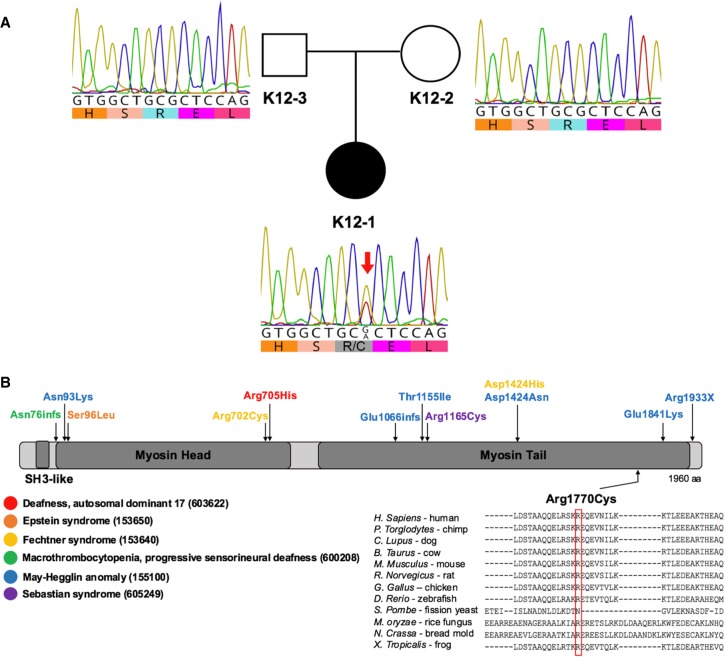Figure 2.
Identification of MYH9 de novo damaging missense germline mutation in a patient harboring large congenital scalp hemangioma. (A) Pedigree structure and the Sanger chromatograms demonstrating the MYH9 c.5308C>T, p.[Arg1770Cys] mutation. The black circle represents the affected patient (K12-1); the unfilled square and circle represent patient's father (K12-3) and mother (K12-2), respectively, who do not have this phenotype. (B) Schematic representation of MYH9 protein structure and previously reported mutations affecting MYH9. Note the diversity of syndromes associated with the MYH9 mutations. Arrows depict the approximate location of previously described amino acid substitutions resulting from mutations in the MYH9. Each protein modification is color-coded and correlates with a key of all MYH9-associated syndromes. Dark rectangles represent functional domains. p.[Arg1770Cys] is depicted below the schematic; the amino acid sequence alignment for 12 different species is represented below, demonstrating phylogenetic conservation of Arg1770.

